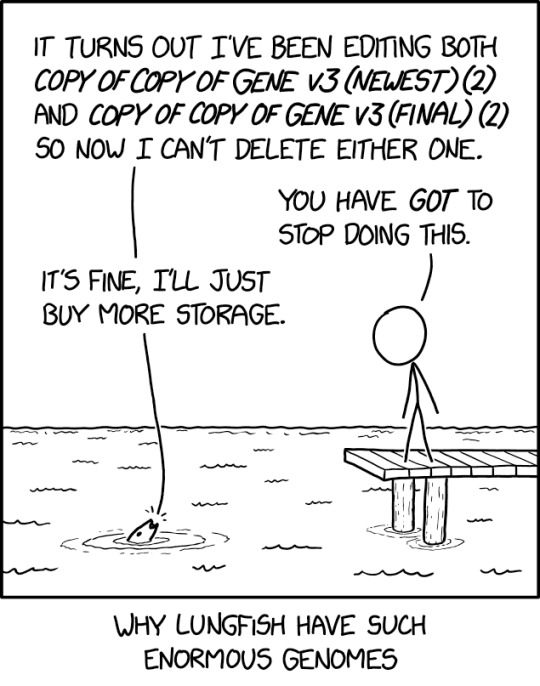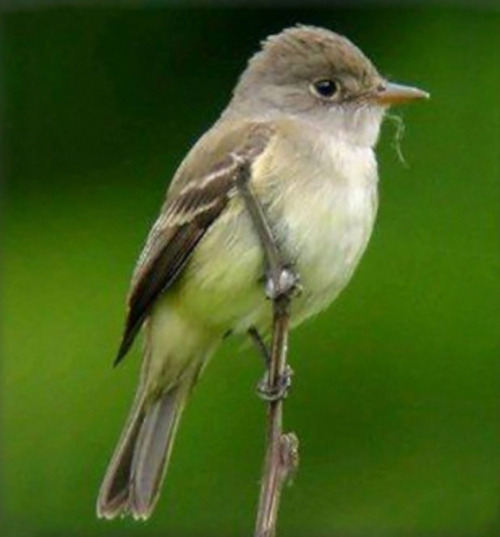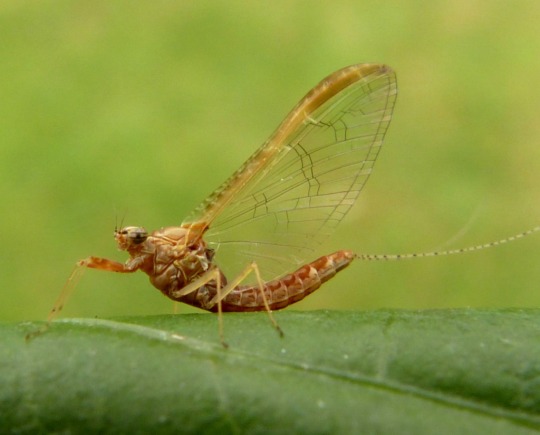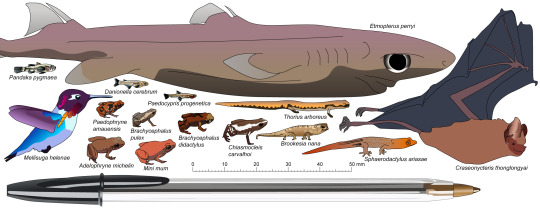#genomes
Explore tagged Tumblr posts
Text

I know having so many base pairs makes rebasing complicated, but you're in Bilateria, so shouldn't you at LEAST be better at using git head?
Lungfish [Explained]
Transcript Under the Cut
[Cueball is standing on the end of a wooden dock looking down at a Lungfish sticking its head out of the water.]
Lungfish: It turns out I've been editing both Copy of Copy of Gene v3(Newest)(2) and Copy of Copy of Gene v3(Final)(2), so now I can't delete either one.Cueball: You have got to stop doing this. Lungfish: It's fine, I'll just buy more storage.
[Caption below comic:] Why Lungfish have such enormous genomes.
1K notes
·
View notes
Text
This just in, starfish are a radially symmetrical head with a stomach.
God I love echinoderms
If you told someone that there’s an entire group of animals that develop butt first as embryos are born bilateral but then grow a radially symmetrical head like a cancer in their side that then bursts out and lives as a completely separate organism from its birth form and moves via hydraulic systems…
They wouldn’t believe you. Yet one of the most beloved cartoon characters is one of them.
#biology#genomics#genome#genomes#genome sequencing#evolutionary biology#echinoderm#starfish#asteroidea#bilateria#Deuterostome#Deuterostomia
5K notes
·
View notes
Text
A small, seemingly unremarkable fern that only grows on a remote Pacific island was on Friday crowned the Guinness World Record holder for having the largest genome of any organism on Earth. The New Caledonian fern, Tmesipteris oblanceolata, has more than 50 times more DNA packed into the nucleus of its cells than humans do. If the DNA from one of the fern's cells -- which are just a fraction of a millimeter wide -- were unraveled, it would stretch out to 106 meters (350 feet), scientists said in a new study. Stood upright, the DNA would be taller than the tower that holds London's famous Big Ben bell. The fern's genome weighed in at a whopping 160 gigabase pairs (Gbp), the measurement for DNA length. That is seven percent larger than the previous record holder, the Japanese flowering plant Paris japonica.
Continue Reading.
#Science#Plants#Biology#Molecular Biology#DNA#Genomes#Fern#New Caledonian Fern#Tmesipteris Oblanceolata#Guinness World Record
834 notes
·
View notes
Text
Excerpt from this story from The Revelator:
As the environment shifts — due to climate change, habitat destruction, or other threats — we can often observe some of the ways that wildlife responds. Populations may decline. Individual animals may move. Some species may alter their behavior.
But at the same time, scientists warn, wild plants or animals may experience harder-to-detect changes — for example, alterations to their genomes, the very DNA that defines them.
It requires a sophisticated genetics laboratory to see these otherwise invisible changes at first, but they may have important implications for populations’ futures.
How exactly can threats such as climate change and habitat loss have hidden effects on a species’ genetic code? Two studies on California birds, both published in the past year, illustrate the potential — both beneficial and problematic.
The endangered southwestern willow flycatcher (Empidonax traillii extimus), ranging from California east to New Mexico and Colorado, depends on rapidly disappearing riparian habitats. As those riverbanks dry up, scientists began to wonder how the birds have adapted. They found the answers by looking to the past.
As the environment shifts — due to climate change, habitat destruction, or other threats — we can often observe some of the ways that wildlife responds. Populations may decline. Individual animals may move. Some species may alter their behavior.
But at the same time, scientists warn, wild plants or animals may experience harder-to-detect changes — for example, alterations to their genomes, the very DNA that defines them.
It requires a sophisticated genetics laboratory to see these otherwise invisible changes at first, but they may have important implications for populations’ futures.
How exactly can threats such as climate change and habitat loss have hidden effects on a species’ genetic code? Two studies on California birds, both published in the past year, illustrate the potential — both beneficial and problematic.

In summer 2023 a group of scientists published a study comparing the genomes of flycatcher specimens collected in the San Diego around the turn of the 20th century — taxidermied birds preserved in museums — with those of contemporary birds, using blood samples collected from individuals captured across willow flycatchers’ breeding range today.
The study was only possible due to rapid advances in technology.
“Until recently, it was very difficult to sequence historical specimens across their entire genome,” says Sheela Turbek, a postdoctoral fellow at Colorado State University who led the project. “DNA tends to degrade over time, and older specimens can have really low DNA concentrations.”
The results surprised Turbek and her colleagues: San Diego flycatchers’ genetic diversity has increased over time.
Most notably, this increased diversity included areas of the genome linked with climate adaptation.
According to the study, it appears the San Diego birds have bred with flycatchers originally from populations in other areas of the West, which may have moved in response to local habitat losses. And as natural selection has acted on this increased diversity, the San Diego birds’ genomes have shifted away from those of neighboring populations, potentially making the local birds better suited for life in a wetter, more humid environment being shaped by climate change.
6 notes
·
View notes
Text
Major Eukaryotic DNA Polymerases

Patreon
#studyblr#notes#medblr#medical notes#med notes#polymerases#dna#genetics#genetics notes#biology#biology notes#bio#bio notes#biochemistry#dna polymerases#eukaryotes#eukaryotic cells#eukaryotic genetics#eukaryotic polymerases#eukaryotic dna#eukaryotic dna polymerases#primers#dna replication#nuclear genetics#nuclear genome#genome#genomes#inheritance#genetic inheritance
3 notes
·
View notes
Text
Genomic analyses of individuals living with HIV-1 revealed a region in chromosome 1 that is associated with reduced viral loads specifically in populations with African ancestry. This could point to much-needed therapeutic targets to address the global public-health crisis caused by HIV-1.
[h/t]
2 notes
·
View notes
Text
The Tree of Unanswered Questions (Answered)
By Arjuwan Lakkdawala
Ink in the Internet
I have often been confused by the theory that we are primates, and that chimps and humans have 98% DNA similarity, and therefore it is "evidance" that we are primates. Darwin's Theory of Evolution by Natural Selection is often cited by many as the backing for this claim, or that it is at the root of it.
I decided to investigate the claims regarding human evolution to the best of my ability. I wanted to get answers that would be clear for people who have not studied human evolution. It's one of the toughest research I have done.
Evolution in itself is such a sprawling subject, one would not know from where to begin.
I decided to make it as simple as possible, I would write the subject as a tree. My own version of the evolutionary tree, not the scientific one with its many intricate details and dead ends. Because to understand that most regular readers might lose their brain cells. I say this because anyone doing research on human evolution will find quotes like "it's complex" "not enough fossil evidance" "it's a tangled web." and so on.
So here I start, let us speak about the highest branch first.
Branch 1 - Hominins (ancient human species)
Early humans are called hominins and there are according to evolutionary biologists many extinct species of humans from the genus Homo, but we the Homo Sapiens are the only living ones on earth.
In this branch there is Homo Erectus (upright human) this species is said to be the first "most human-like ancient hominin."
It is said that ancient hominins first appeared on earth six million years ago and they walked on four.
Bipedalism - the ability to walk on two legs evolved four million years ago in humans.
So Homo Erectus are the first to walk on two, they lived two million years ago, until at least 250,000 years ago.
I have seen online artificial imagineering of their faces, and you get a human face according to the artificial intelligence software.
But according to evolutionary biology they are not modern humans.
As with the example of Homo Erectus many hominin fossils have been found, and basically each has been classified as an extinct ancient human species.
There are hominins thought to be older ancrstors to Homo Erectus and those are called "super archiac."
Then in the branch after many hominins comes two of our most famous and closest cousins the Neanderthals and Denisovans.
Again not modern humans according to scientific classification.
Neanderthals went extinct about 40,000 years ago.
Denisovans are said to have gone extinct 40,000 to 30,000 years ago.
Denisovans are closer to Neanderthals than modern humans according to the science.
It is said Neanderthals and modern humans interbreeded.
There is no explanation as to why or how Neanderthals became extinct.
How does evolution take place? Answer: By mutations.
According to the science of evolution it happens in two types of periods.
1. The Microevolution (short period) in this period minor changes get made to species according to natural selection. The difference in anatomy is considered not to be significant.
2. The Macroevolution (long period) in this period great changes get made to a species, and even evolving it into a whole new species.
But there has to be the existence of an intermediate species in the chain or branch of evolutionary changes.
Example:
Charles Darwin was hoping to get palaeontological evidance of an intermediate species. Two years after the publication of his book 'On the Origin of Species' the fossil 'archaepteryx' was found. The fossil link between birds and dinasaurs.
"This extraordinary fossil—bearing feathers as well as teeth, claws, a bony tail and other reptilian traits—was just the sort of creature that Darwin’s theory of evolution by natural selection predicted should exist. The feathers left no question that the Jurassic Archaeopteryx was a bird, but the creature also had a suite of saurian traits that pointed to a reptilian ancestry." - Smithsonian Megazine
However, anthropologist Briana Pobinar, says that the term "Missing Link" is not accurate because it depicts a linear chain in evolution, which is not the pattern they see.
Pobinar says evolution “produces a tree-like branching pattern with multiple descendants of an ancestor species existing at the same time, and sometimes even alongside that ancestor species.” - Smithsonian Megazine.
The human that is supposed to connect modern humans with primative ancestors has never been found.
So much so that it appears that it's a "ghost" species. What it means is that there is no fossil or DNA evidance to make a scientific connection.
In fact a new study published in Nature Journal challenges previous notions about hominin contribution to modern Homo Sapiens.
"New model for human evolution suggests Homo sapiens arose from multiple closely related populations.
A new study in Nature challenges prevailing theories, suggesting that Homo sapiens evolved from multiple diverse populations across Africa, with the earliest detectable split occurring 120,000-135,000 years ago, after prolonged periods of genetic intermixing." - Scitech Daily
This means that modern humans evolved from similar other modern humans. There is no genetic evolutionary notable impact from primate like hominins.
(Study is very new released in May 2023)
So what really makes modern humans different to so called other species of humans. I would say it's the brain and cognitive ability, and this brings me to the second branch of the tree.
Branch 2. (Human Brain Development)
The fossils so far found of "extinct human species" help scientists determine bone structure and facial features of those individuals, but brain tissue is not preserved well, so scientist know little about the cognitive abilities of these species.
So archealogy is the best option for researchers to try and understand the thinking abilities of more recent species like Neanderthals and Denisovans.
As I have read in an article, this too is extremely complicated, as it raises the question are the primitive tools found in excavations and cave paintings really a sign of limited intelligence or underdeveloped environment. Can we really assume that Neanderthals and Denisovans if in a modern world would not be able to think like a modern human?
Researchers have observed differences in brain case size of extinct humans. But does this imply higher or lower cognitive abilities.
To answer to this question or shed some light on it as I was so curious, I decided to take my research from evolutionary biology, history, and archaeology to neuroscience and investigate the development of the human brain.
The confusion of brain development and cultural effect is because of neuro plasticity. In a study done chimps it appeared had rigid neuro plasticity compared to humans. So what is brain plasticity? It is the brain's ability to rewire itself structurally and functionally according to experience and injury. There are even ongoing studies about if plasticity itself can evolve. The more plasticity the stronger cognitive abilities.
Neuroscience is one of the hardest and active field of research. So I'll not get into other aspects of the brain. Here I'll examine the aspect of brain development in regard to neuro plasticity.
"The neocortex—the outermost layer of the brain characterized by the squiggly sulci, or brain folds—is the region that gives all primates their exceptional intelligence. In both chimps and humans, this brain region continues to grow and organize for years after birth, allowing us to learn and develop socially. The brain's ability to reorganize in response to environmental cues is known as plasticity, and it is this flexibility that allows us to learn things we never knew at birth." - Science.org
There lingers the question of brain size regarding the hominins or Neanderthals, Denisovans, if brain tissue of their fossils cannot be examined, we can instead try to find out if a larger brain (large brain cases of fossils) mean higher intelligence or the ability for modern human cognition.
"Having an unusually large brain doesn't necessarily make someone a genius, and large-scale research suggests only a slight and tenuous relationship between brain size and intelligence." - Psychology Today.
With this I conclude the second branch, and start the third branch which is about intelligence in apes and other animals.
Branch 3. (Intelligence in the animal kingdom)
Animals that have shown high Intelligence in comparison to most animals are apes, parrots, crows, ravens, mice, elephants, dogs, and new research suggests octopuses.
"The more that researchers examine octopus genetics, brains and sensory capabilities, the more they find startling similarities to our own minds, hand in hand (or sucker-covered arm in sucker-covered arm) with bizarre differences between how our species experience the world." - Discover.
However, there is nothing close to the level of human intelligence.
Charles Darwin had based his theory on physical changes, he did not know about genetics.
The Theory of Evolution incorporated with the study of genetics is called 'Modern Evolution Synthesis."
What I have done in this tree is summarise the theory of human evolution based on physical and biological research.
What I have found is so far scientifically there is no fossil or genetic evidance that says Homo Sapiens evolved directly from apes.
We are in the 21st century with sophisticated technologies and molecular biology. There is nothing stopping scientists from searching for fossil or genetic evidence except that it can't be found.
Neanderthals and Denisovans have said to have existed in the Ice Age, and there were hominins in the Stone Age.
Copyright ©️ Arjuwan Lakkdawala 2023
Arjuwan Lakkdawala is an author and independent journalist. Twitter: @Spellrainia Email: [email protected]
Sources:
Metode Science Studies Journal, 7 (2017)
Human Brain Evolution - How increase in brain plasticity made us a cultural species - Aida Gomez Robles and Chet C. Sherwood
What Is Neural Plasticity?
Rommy von Bernhardi et al. Adv Exp Med Biol. 2017.
Smithsonian Megazine - Riley Black, Natural History Museum- Katie Pavid
Natural History Museum- Josh Davis
National Geogrphic - Tim Vernimmen
YourGenome.org - Society and Behaviour
Australian Museum - A Timeline of Gissil Discoveries - Fran Dorey
Britannica - Homo Sapiens
Smithsonian: National Museum of Natural History - Introduction to Human Evolution
Live Science: What is Darwin's Theory of Evolution - By Ker Than, Ashley P. Taylor, Tom Garner
Discover Megazine
Psychology Today
Daniel Graham, Ph.D.
A Bigger Brain is Not Necessarily Better
Science.org - David Shultz
New DNA Research Changes Origin of Human Species -
Scitech Daily - University of California - Davis
National Library of Medicine - National Center for Biotechnology Information -
Front Hum Neurosci. 2013; 7: 707.
Published online 2013 Oct 30. doi: 10.3389/fnhum.2013.00707
PMCID: PMC3812990
PMID: 24194709
Evolution, development, and plasticity of the human brain: from molecules to bones
Branka Hrvoj-Mihic,1,2 Thibault Bienvenu,1 Lisa Stefanacci,1,2 Alysson R. Muotri,2,3 and Katerina Semendeferi1,3,*
What may have given modern humans an edge over Neanderthals, according to new research
By Katie Hunt, CNN
Study.com - People and Society in the Stone Age
Jessica Holmes, Joanna Harris
#biology#evolution#science#arjuwan lakkdawala#nature#genomes#animals#Neanderthals#Denisovans#hominins#homo sapien#homo erectus#charles Darwin#neuroscience#neuroplasticity#apes#tree#theory of evolution#on the theory of origin
2 notes
·
View notes
Note
The classic is back with a new hyperfixation
man & girl go out to drive under moonlight. they stop at on at a side of road. he turn to his girl and say: "baby, i love you very much" "what is it honey?" "our car is broken down. i think the engine is broken, ill walk and get some more fuel." "ok. ill stay here and look after our stereo. there have been news report of steres being stolen." "good idea. keep the doors locked no matter what. i love you sweaty"
so the guy left to get full for the car. after two hours the girl say "where is my baby, he was supposed to be back by now". then the girl here a scratching sound and a voice say "LET ME IN"
the girl doesn't do it and then after a while she goes to sleep. the next morning she wakes up and finds her boyfriend still not there. she gets out to check and man door hand hook car door.
String identified:
a & g g t t gt. t t at at a a. t t g a a: "a, c" "at t ?" " ca . t t g , a a gt ." ". ta a at t. t a t t g t." "g a. t c att at. at"
t g t t gt t ca. at t t g a " a, a t ac ". t t g a catcg a a c a "T "
t g 't t a t at a g t . t t g a a t t t. gt t t cc a a a ca .
Closest match: Cloeon dipterum genome assembly, chromosome: 3 Common name: Small minnow mayfly

2K notes
·
View notes
Text
A new way to determine whether a species will successfully invade an ecosystem
New Post has been published on https://thedigitalinsider.com/a-new-way-to-determine-whether-a-species-will-successfully-invade-an-ecosystem/
A new way to determine whether a species will successfully invade an ecosystem


When a new species is introduced into an ecosystem, it may succeed in establishing itself, or it may fail to gain a foothold and die out. Physicists at MIT have now devised a formula that can predict which of those outcomes is most likely.
The researchers created their formula based on analysis of hundreds of different scenarios that they modeled using populations of soil bacteria grown in their laboratory. They now plan to test their formula in larger-scale ecosystems, including forests. This approach could also be helpful in predicting whether probiotics or fecal microbiota treatments (FMT) would successfully combat infections of the human GI tract.
“People eat a lot of probiotics, but many of them can never invade our gut microbiome at all, because if you introduce it, it does not necessarily mean that it can grow and colonize and benefit your health,” says Jiliang Hu SM ’19, PhD ’24, the lead author of the study.
MIT professor of physics Jeff Gore is the senior author of the paper, which appears today in the journal Nature Ecology and Evolution. Matthieu Barbier, a researcher at the Plant Health Institute Montpellier, and Guy Bunin, a professor of physics at Technion, are also authors of the paper.
Population fluctuations
Gore’s lab specializes in using microbes to analyze interspecies interactions in a controlled way, in hopes of learning more about how natural ecosystems behave. In previous work, the team has used bacterial populations to demonstrate how changing the environment in which the microbes live affects the stability of the communities they form.
In this study, the researchers wanted to study what determines whether an invasion by a new species will succeed or fail. In natural communities, ecologists have hypothesized that the more diverse an ecosystem is, the more it will resist an invasion, because most of the ecological niches will already be occupied and few resources are left for an invader.
However, in both natural and experimental systems, scientists have observed that this is not consistently true: While some highly diverse populations are resistant to invasion, other highly diverse populations are more likely to be invaded.
To explore why both of those outcomes can occur, the researchers set up more than 400 communities of soil bacteria, which were all native to the soil around MIT. The researchers established communities of 12 to 20 species of bacteria, and six days later, they added one randomly chosen species as the invader. On the 12th day of the experiment, they sequenced the genomes of all the bacteria to determine if the invader had established itself in the ecosystem.
In each community, the researchers also varied the nutrient levels in the culture medium on which the bacteria were grown. When nutrient levels were high, the microbes displayed strong interactions, characterized by heightened competition for food and other resources, or mutual inhibition through mechanisms such as pH-mediated cross-toxin effects. Some of these populations formed stable states in which the fraction of each microbe did not vary much over time, while others formed communities in which most of the species fluctuated in number.
The researchers found that these fluctuations were the most important factor in the outcome of the invasion. Communities that had more fluctuations tended to be more diverse, but they were also more likely to be invaded successfully.
“The fluctuation is not driven by changes in the environment, but it is internal fluctuation driven by the species interaction. And what we found is that the fluctuating communities are more readily invaded and also more diverse than the stable ones,” Hu says.
In some of the populations where the invader established itself, the other species remained, but in smaller numbers. In other populations, some of the resident species were outcompeted and disappeared completely. This displacement tended to happen more often in ecosystems when there were stronger competitive interactions between species.
In ecosystems that had more stable, less diverse populations, with stronger interactions between species, invasions were more likely to fail.
Regardless of whether the community was stable or fluctuating, the researchers found that the fraction of the original species that survived in the community before invasion predicts the probability of invasion success. This “survival fraction” could be estimated in natural communities by taking the ratio of the diversity within a local community (measured by the number of species in that area) to the regional diversity (number of species found in the entire region).
“It would be exciting to study whether the local and regional diversity could be used to predict susceptibility to invasion in natural communities,” Gore says.
Predicting success
The researchers also found that under certain circumstances, the order in which species arrived in the ecosystem played a role in whether an invasion was successful. When the interactions between species were strong, the chances of a species becoming successfully incorporated went down when that species was introduced after other species have already become established.
When the interactions are weak, this “priority effect” disappears and the same stable equilibrium is reached no matter what order the microbes arrived in.
“Under a strong interaction regime, we found the invader has some disadvantage because it arrived later. This is of interest in ecology because people have always found that in some cases the order in which species arrived matters a lot, while in the other cases it doesn’t matter,” Hu says.
The researchers now plan to try to replicate their findings in ecosystems for which species diversity data is available, including the human gut microbiome. Their formula could allow them to predict the success of probiotic treatment, in which beneficial bacteria are consumed orally, or FMT, an experimental treatment for severe infections such as C. difficile, in which beneficial bacteria from a donor’s stool are transplanted into a patient’s colon.
“Invasions can be harmful or can be good depending on the context,” Hu says. “In some cases, like probiotics, or FMT to treat C. difficile infection, we want the healthy species to invade successfully. Also for soil protection, people introduce probiotics or beneficial species to the soil. In that case people also want the invaders to succeed.”
The research was funded by the Schmidt Polymath Award and the Sloan Foundation.
#Analysis#approach#author#Bacteria#Community#competition#data#diversity#Ecology#Ecosystems#effects#Environment#Evolution#experimental#factor#Food#form#Foundation#Fraction#genomes#gut#gut microbiome#Health#how#human#infection#infections#interaction#it#learning
0 notes
Text

You might know this tiny frog.
This is Mini mum (photo by Andolalao Rakotoarison), a species I had the pleasure to name—together with a team of amazing colleagues—back in 2019.
That was the start of a fascination with the process and consequences of miniaturisation for vertebrates. How the hell does this tiny frog manage to fit all of its vital organs—more or less all the same senses and organs that we have—into a package the size of a tic-tac‽ Why and how has it evolved to be so small? And why don't we get frogs that are much smaller?
Well, I just secured 1.5 MILLION Euros (!!!) in the form of a European Research Commission Starting Grant, to answer these and other related questions in the genomes of Mini frogs and other miniaturised vertebrates.
Because it turns out, there are *lots* of miniaturised vertebrates, and they push the boundaries of how small we think it is possible for a vertebrate to be! Here is a little graphic of some of them, scaled to a BIC ballpoint pen.

The project is called GEMINI: The Genomics of Miniaturisation in Vertebrates! You can read more about it on my website here, and in the press release, here!

#HUGE NEWS ABOUT TINY ANIMALS#news#miniaturisation#biology#science#genomics#Mini#this is a career defining grant#I am beyond overwhelmed#so many zeros
9K notes
·
View notes
Text
#genomes#sinitic people#neolithic yellow river farmers#han chinese 90-95%#korean#20 % amur river hunters#tungusic and mogolic ancestors#japanese 20% dna amur river hunters#20 % jomon hunter/gather ancestry
0 notes
Text
The longest genome of all the animals on Earth belongs not to a giant, or a cognitively advanced critter, but a writhing, water-dwelling creature seemingly frozen in time, right at the cusp of evolving into a beast that can live on land. These are the lungfish, a class of freshwater vertebrates whose peculiar characteristics are reflected in a colossal genetic code. Able to breathe both air and water, with limb-like fins, and a well-developed skeletal architecture, these strange ancient creatures are thought to is thought to share a common ancestor with all four-limbed vertebrates known as tetrapods.
Continue Reading.
297 notes
·
View notes
Text

Dive into the future of molecular biology with Next-Gen Sequencing (NGS)! Revolutionize your research with this cutting-edge technology that unlocks the secrets of entire genomes in record time.
Say “goodbye” to traditional sequencing methods and hello to a world of possibilities!
At Bio Basic, we're at the forefront of NGS innovation, offering rigorously tested products that guarantee safety and compliance with industry standards. With prompt delivery and seamless experiments, your journey to discovery just got smoother.
Inquire more about our NGS services today at [email protected]
Or, browse https://www.biobasic.com/dna-next-gen/ for further details.
#biobasic#nextgensequencing#ngs#sequencing#innovation#possibilities#compliance#genomes#experiments#testedproducts#industry standard
0 notes
Text
These individuals are the oldest representatives of Western Europeans to have established themselves permanently in Europe and to have left traces in the genomes of present-day Europeans.
It is estimated they settled in the region after the ice age that took place from 40,000 to 38,000 years ago.
0 notes
Text

















Metal Gear Solid.
The Shadow Moses incident.
Twitter (X) | Instagram | Artstation
#solid#snake#solidsnake#metalgearsolid#shadowmoses#videogame#playstation#1998#tactical#espionage#action#drama#romanza#memories#90s#hideokojima#fanart#drawing#digitalartwork#digitalillustration#illustration#snow#sneaky#call#roy campbell#meiling#naomi hunter#solidiers#genome#decoy octopus
2K notes
·
View notes
Text


“Sorry,” Stiles said, unsure of why he was apologizing. “I’ve never heard that song before. Did you write it?” Derek looked uncomfortable, maybe a touch embarrassed, which was answer enough. “It’s good. I like it. It’s calming.” The small smile he got in response melted his heart a little bit. Fucking hell, he was so gone for this asshole. Stiles didn’t know what he was going to do. He wished he’d never realized how much he loved him. Wished he’d just continued to think they were best friends and nothing more. It was slowly going to kill him being so close, and yet so fucking far. Clearing his throat, he brought the book back up to continue reading, muttering that Derek should keep playing. He did, his fingers plucking gently at the strings, filling the loft with soft music. It really was calming, and soothing. Stiles really liked it. He liked it even more when he realized Derek could honestly express himself with the guitar. It still wasn’t a voice, but it was something, at least.
Actions Speak Louder than Words (ch18) by @isthatbloodonhisshirt
This fic is what spurred me to start doing sterek fanart back in the beginning of december - magic!stiles, cursed!derek, stiles/jackson terrifying everyone else as friends - an incredible 430K story with a completely endearing slow-burn and slowly unfolding exploration of the characters and their relationship, made complete with the perfect bow of cursed-mute-Derek because 'Derek's eyebrows have a language of their own but only Stiles is fluent' is my favorite and this author does it SO well. And gives Derek a guitar. Derek plays a guitar!!
Ella, consider this my loveletter to your works - they all, this one in particular, buoyed me through a tough time in my life and brought me back to a love of drawing that I haven't had in years and a fandom that has been so generous in their support of my silly art. Thank you for sharing your works!
And a huge thank you to everyone's support so far - the sweet comments in replies, the unhinged all-caps tags, yes-and'ing my silly ideas and headcanons, i'm just over here kicking my feet and giggling and definitely not getting teary-eyed over it no siree no lacrimal action happening here
#Teen wolf#sterek#stiles stilinski#derek hale#sterek fanart#fanart of fanfiction#isthatbloodonhisshirt#Actions speak louder than words#my art#but also#mel blabs#and my too much gene is showing but lbr at this point it's more of a too much genome#Except when it comes to drawing a guitar apparently#strings? having it look like it's tuned??#shh#i had to draw a line somewhere and it was drawn somewhere after the 9th redraw of stiles' face and 4th of derek's LOL
1K notes
·
View notes